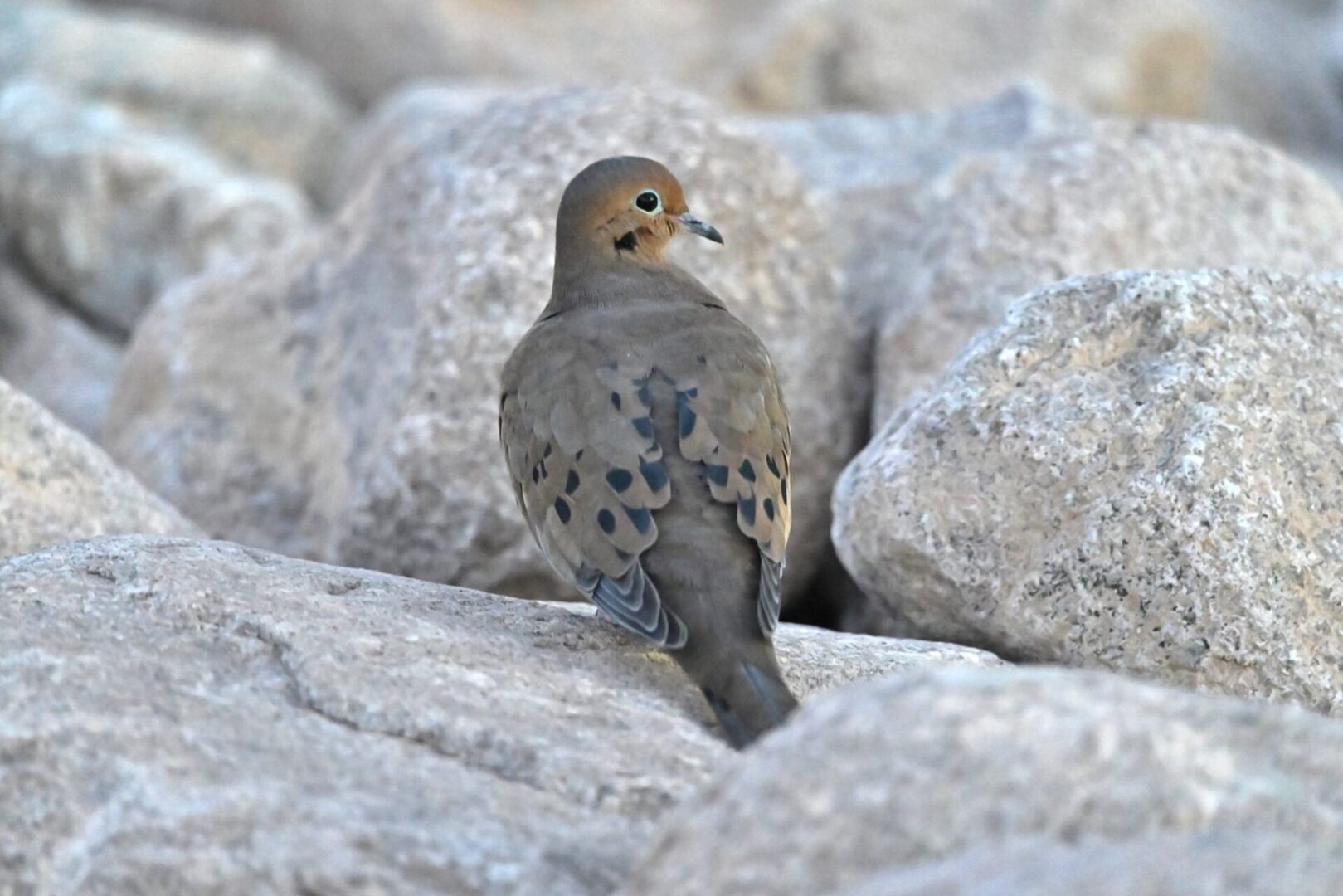The Mourning Dove

WHAT COMMON WETLANDS PARK BIRD REPRESENTS THE “BEST OF HUMANITY” DURING THE HOLIDAYS?
Ho, Ho! This Nature Moment should come as no surprise. You can spot mourning doves (Zenaida macroura) in Clark County Wetlands Park, perched in trees or walking bravely on the ground pecking seeds that make up over 98 percent of their diet. You may also notice them hanging out on neighborhood walls and phone wires.
Doves are well established throughout the lower 48 states in the US. They are present in Hawaii, but not Alaska. Doves go by other names, including the American mourning dove, the rain dove, and colloquially as the “turtle dove” (as chronicled in the traditional Christmas carol, “Twelve days of Christmas”). They were once known as the Carolina pigeon and Carolina turtledove. The species is the most widespread and abundant game bird in North America, with a US population estimated at 350 million. And yes, they are related to the pigeon, which frequent many of the same haunts.
Mourning doves are light gray and brown and generally muted in color. Males and females are similar in appearance, with brown necks with a spot on each side. Their brown wings have a few black spots, and their tails are long and tapered, coming to a point. Their pink legs and feet look very distinctive. The mourning dove is one of the smallest dove species in the US—about 12” long.
An easy way to recognize the dove is from its low cooing call, or from the swooshing or whistling sound it makes with its wings in flight. Mourning doves also freeze on the ground when approached. When they take off at the very last minute their wing beats can be quite startling. The birds tend to feed busily on the ground, swallowing seeds and storing them in an enlargement of their esophagus called the crop. Once they’ve filled it, they fly to a safe perch to digest their meal. Mourning doves eat roughly 12 to 20 percent of their body weight per day, or an average of 71 calories.
To attract a female, the male struts and coos, sometimes from a favorite “cooing perch” that it will possessively fight other males for. Once the pair has perched, the two will preen and bob their heads together in a display of unity. The species is generally considered monogamous.
During the breeding season, you might see three doves flying in tight formation, one after another, in a form of social display. Usually, the lead bird is the mated pair male. The second bird is an unmated male, chasing his rival from the area intended for nesting. The third is the female of the mated pair, which seems to go along for the ride.
When it’s nesting time, the male brings the female loose strands of organic matter, such as pine needles, twigs, and grass stems to make the nest. Mourning dove females typically lay two eggs. Both parents incubate and care for the young, who are fed crop milk by their parents (i.e., digested and regurgitated seeds with fluids). The baby birds leave the nest around 15 days after hatching. However, they will still hang around their nest, waiting for parents to bring them food to eat for about one to two weeks after fledging.
The mourning dove does very well in man-altered habitats. In warm climates, such as the Las Vegas Valley, they will raise up to six broods per year—more than any other native bird. One reason why mourning doves do well in our desert habitat is that they can drink brackish water (up to almost half the salinity of sea water) without becoming dehydrated the way humans would.
Since the earliest of human days, doves have been recognized as celestial messengers and symbols of joy, comfort, and hope. On behalf of the Board of Wetlands Park Friends, we wish you peace. Happy Holidays!
– Constance Carlson, Director of Communications; photography by Phil Martini
Please enjoy these YouTube videos:
Mourning Dove Call 00:18
Mourning Dove’s nest building and feeding chicks crop milk 4:40
